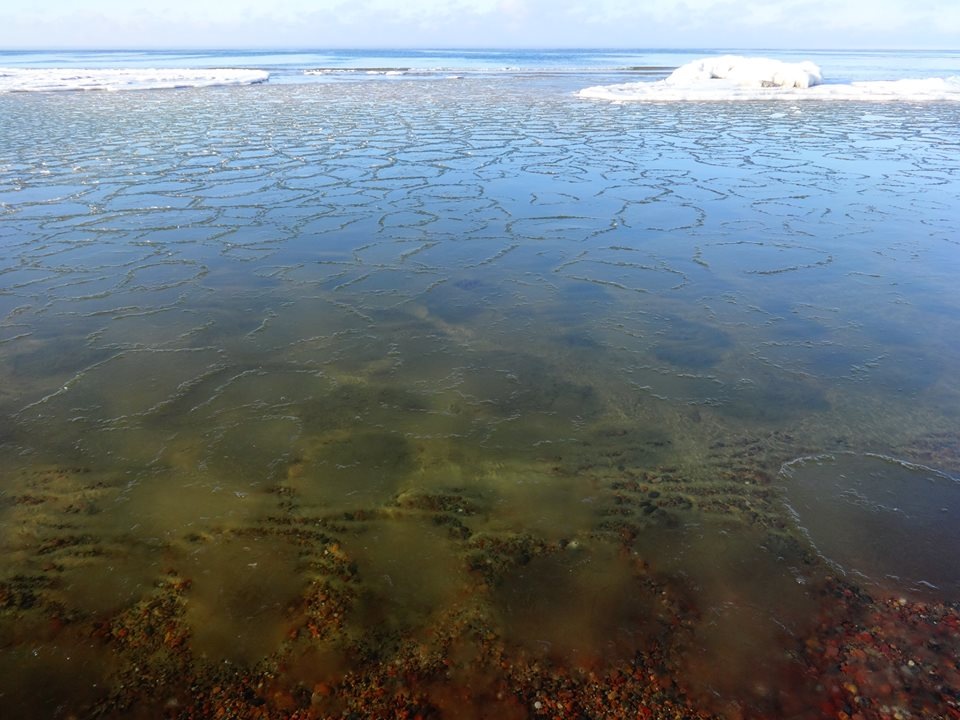Collaboration with Nida Art Colony (LT)
| 0000-00-00 00:00:00
Satellietgroep (The Hague, 2006) explores through arts and culture how the sea and waterways influence cities, people, communities and environment. Our aim is to enhance public and professional awareness on coastal transitions. Long term projects are 'Badgast' - artist in residency program at The Hague/Scheveningen, 'Now Wakes The Sea', the international exchange residency program in collaboration with international cultural partners.
For 2014/15 we our proud to announce the long term collaboration with Nida Art Colony in Lithuania. First part is the Inter-format Symposium 2014 at Nida Art Colony May 22–25, 2014, followed by exchange residencies in The Netherlands (2014) and in Lithuania (2015), concluded during a second symposium in 2015 in The Hague (NL).
http://nidacolony.lt
The central theme of this collaboration is the shift from holocene (directed by nature) to anthropocene (directed by human). Both coasts of The Netherlands and Lithuania are perceived as natural coastal landscapes but are dynamic cultural coastal landscapes.
The Sandengine (Zandmotor - now transformed in a spit with lagoon) in The Netherlands near The Hague is called 'building with nature' (as opposed to buiding dykes and Deltaworks as 'building against nature') while the Curonian Spit (in between salt Baltic Sea and freshwater Lagoon) in Lithuania is cutural part of Unesco World Heritage.
LIMINAL LABS#1:
THIJS EBBE FOKKENS @ NIDA ART COLONY
www.thijsfokkens.com | www.locatieZ.net | http://nidacolony.lt
To continue our long term international exchange collaboration with Nida Art Colony on the Curonian Spit in Lithuania Thijs Ebbe Fokkens is artist in residence during Febuary 2015. His art practice provides the means to contemplate, orientate and wonder. In his drawings, photographs and installations he evokes a space and place which transcends the literal & psychical in favor of the ambiguous & mental. During his stay at Nida’s Curonian Spit his artistic practice will engage with the projection of meaning onto this area of coastal transition.
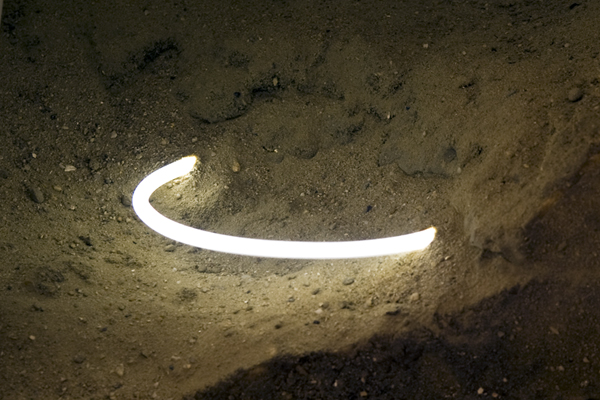
Thijs Ebbe Fokkens: For Future Reflections, 2014
links:
Program of the symposium: http://nidacolony.lt/en/432-programme-of-inter-format-symposium-on-flux-of-sand-and-aquatic-eco-systems-in-may-22-25th
Follow in Dutch the blog about 'Expedition Eridanos': http://www.bramesser.com/or in English Facebook: https://www.facebook.com/ExpeditionEridanos
Posts:
Themes and Open Call Inter-Format Symposium ' On Flux of Sand and Aquatic Ecosystems'
Fieldtrip to Nida Art Colony January 2014
Vytautas MichelkeviÄius curator in resident in The Hague February 2014
Selection of Dutch participants of the Inter-Format Symposium
'Expedition Eridanos' by philosopher Bram Esser and designer Francois Lombarts
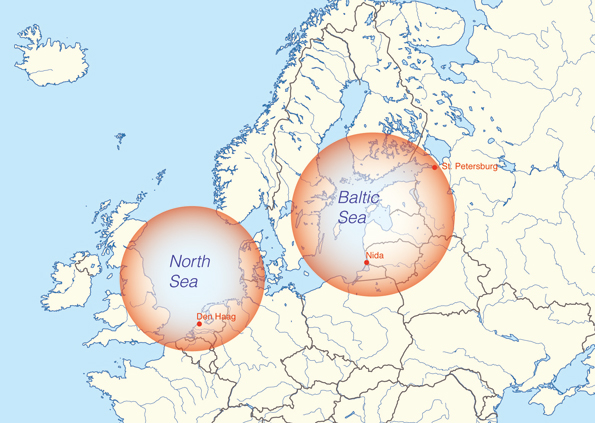
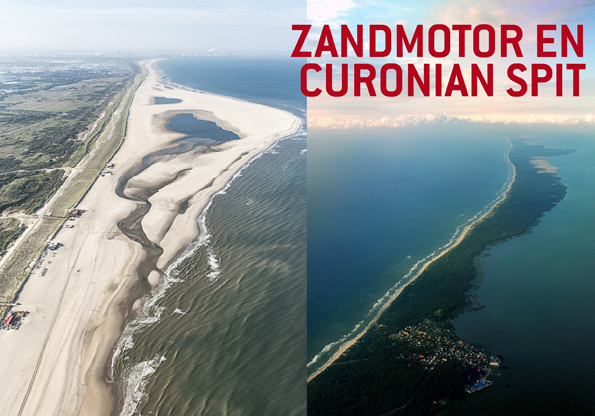
Satellietgroep @ Littoral 2014 Lithuania
| 2014-10-10 09:43:38
HOW TO BECOME AN EXPLORER IN THE KNOWN WORLD?
'Expedition Eridanos' workshop during the scientific coastal conference Littoral 2014 'Facing Present and Future Coast Challenges' with co-curator Ronald Boer, philosopher Bram Esser & designer Francois Lombarts on September 24 13:20-15:30 at Klaipeda University, Lithuania and on board.
Littoral 2014 addresses the crucial need to understand increasing anthropogenic pressure and ongoing global and regional changes as present and future challenges.
Expedition Eridanos is an ongoing fieldresearch and during Littoral Bram Esser and Francois Lombarts engage scientists into a tactile guided experience. They host a workshop how to become an explorer in the known world, following the technique of narrative research which they explore during Expedition Eridanos: travelling on foot on the shores from the innovative Sand Engine in the Netherlands to the origins of the sand in the Northern Baltic Sea.
They seek to understand and unlock the coastal landscape, not by unraveling myths, but by creating new ones. 

More: https://www.facebook.com/ExpeditionEridanos
More information: www.balticlagoons.net/littoral2014
With special thanks to the Dutch Embassy in Lithuania, Klaipeda University, Littoral 2014 and Nida Art Colony.
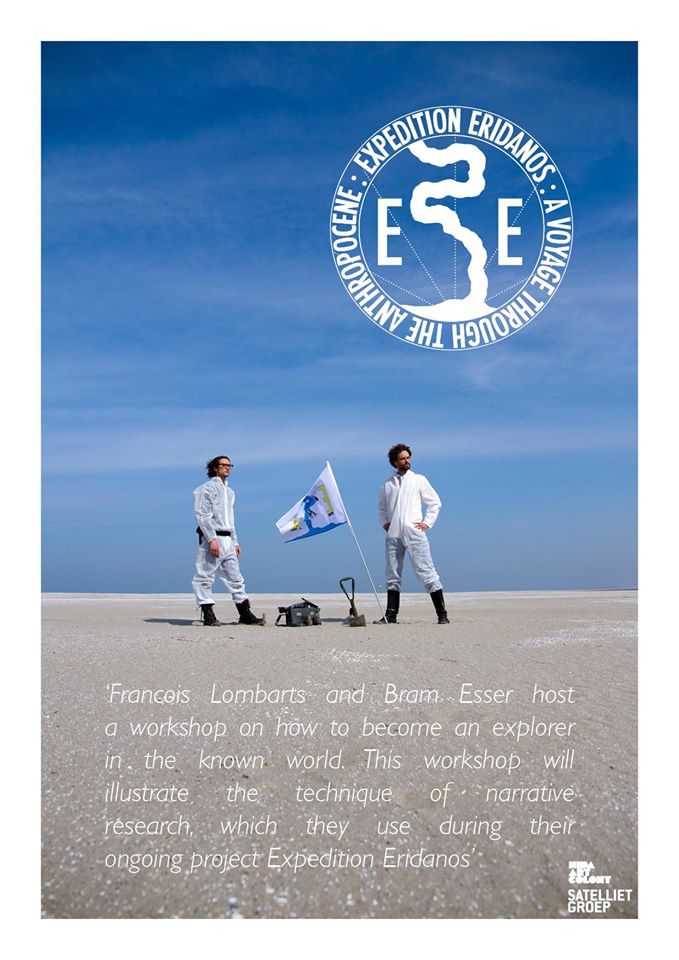
Liminal imaging of nature
| 2014-07-21 19:05:34
LIMINAL IMAGING OF NATURE
Review ‘On Flux of Sand and Aquatic Ecosystems’ – Inter-Format Symposium at Nida Art Colony (LT, May 2014) by Jacqueline Heerema, conceptual artist, curator and founding director of Satellietgroep (NL). Published in Nida Art Colony Log#6.
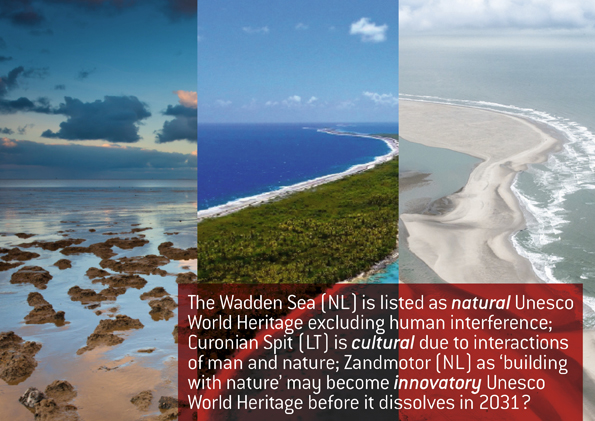
Image: Jacqueline Heerema - Innovatory Heritage
We all live in the bubble of a Truman Show.
One day you wake up and realise what kind of world you live in.
Living in the Netherlands and Nida in Lithuania means living in an artificial man-made environment. Looking at the conditions of these two coastal landscapes it strikes that the precarious liminality of coexistence between man and water becomes most evident in places that appear to be natural environments but are in fact cultural landscapes. Like living in a theme park, pleasing to the eye without worries and full of leisure and endless entertainment.
Whilst the Curonian Spit – where Nida Art Colony is based – has the status of cultural Unesco World Heritage as word wide example of interactions between man and nature, in The Netherlands – where Satellietgroep is based – the Dutch are masters in disguising the cultural landscape as a natural one. We tend to design, construct, reconstruct and deconstruct nature to fit it to our needs. Creating a condition where we are so intertwined with the landscape, it becomes impossible to make a distinction between man and nature. In fact, the constructing of nature is proudly called ‘New Wilderness’. The conditions are so controlled that we are incapable to let it run it’s natural course. Our sentiment can’t stop us from feeling sorry for the animals that die ‘naturally’ in the Oostvaardersplassen (a man-made nature reserve in the Netherlands).

In contrast to the cultural Unesco status of the Curonian Spit, in the north of The Netherlands The Wadden Sea is natural Unesco World Heritage. Though it is the largest and ‘unbroken’ intertidal mud flat area, it still exists due to human interferences. However, on the Unesco charts of the Wadden Sea the shipping lanes and the islands are excluded…… Is this denial of human existence and the impact on nature?
I would like to reflect on man-made landscapes and the role of arts in imaging of nature.
“Landscapes are cultures before they are nature; constructs of the imagination projected onto wood and water and rock. [...] But it should also be acknowledged that once a certain idea of landscape, a myth, a vision, established itself in an actual place, it has a peculiar way of muddling categories, of making metaphors more real than their referents; of becoming, in fact, part of the scenery.” 
(Simon Schama, Landscape and Memory, London,1995)
Arts after nature – or nature after arts?
Artists construct a conception of nature, so we can relate and refer through these images to nature. Through these conceptions artists change the way we perceive nature. Even change the concepts of how nature should look as landscape are nowadays re-shaped to resemble famous paintings and writings. 
In that sense artists are mediators. That implies engagement and brings a great responsibility. Contemporary artists are no longer on the outside to reflect nature and shape artefacts - like Land Art - that finds their space in the world, but are at the core of changing relationship between man and nature. The old ideas of a division between either human or nature has dissolved. The accessibility to new technologies enlarged the scope of artists almost limitless.
The eye of the beholder
Man is an explorer and invented cartography to chart the world and model reality and it’s myths. 
Since around 1800 the traveller gradually transformed in a tourist in search of paradise. Landscape became an imaginary construction. Travel books like Baedeker and Murray guided visitors through the landscape in the tracks of novels by sir Walter Scott and Jane Austen. Painters drew sketches in nature that were brought back to the atelier to develop into a painting after nature. The invention of paint in a tube made it possible for impressionist painters to work outdoors en plein air on artistic subjective perception of nature. Later the invention of the camera made it possible to further idealize nature on postcards. Land Art became Destination Art, the ‘bible’ for traveling art lovers. Digital manipulations unlimited constructions of the world, and the world wide web allows us to know about art and landscapes we will never see ourselves. The world becomes a myth once more that we may shape to our needs?
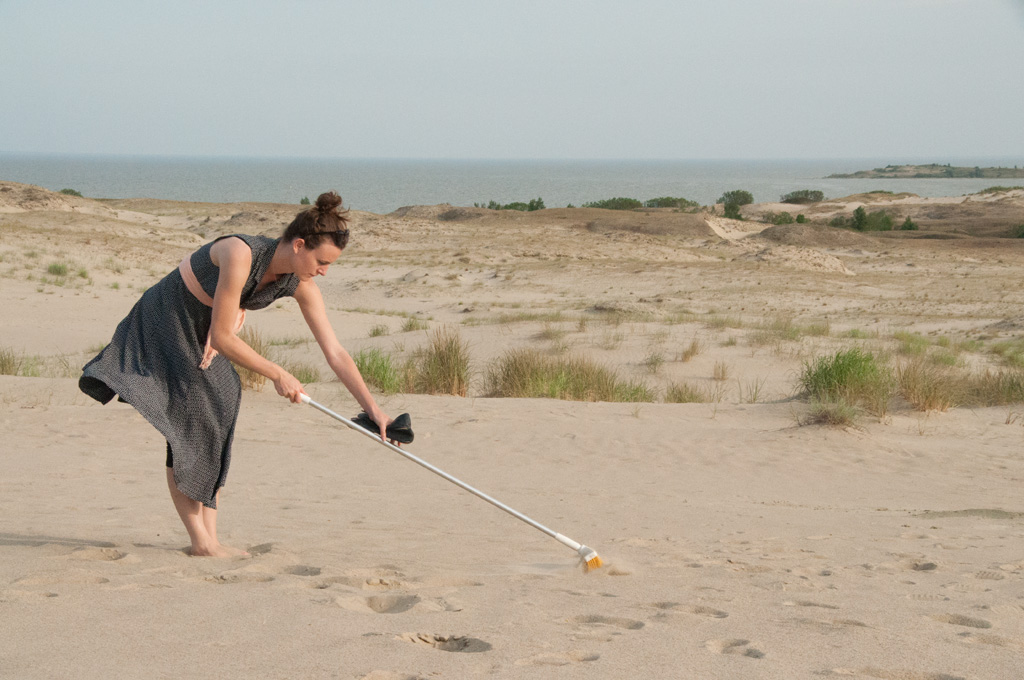
Can we erase traces of mankind? Public intervention by Theun Karelse at Nida, May 2014. Photo: Natacha Paganelli / NAC.
Local fieldwork in the context of global transitions
Awareness rises that the anthropocene era may provide no escape for nature and thus for mankind. We need to engage with global issues in order to survive. Ecosystems have no boundaries. We challenging named one of the themes of the Inter-Format Symposium ‘Man as Ecosystem’ at Nida. Faced with global prospects of rising sea levels, shrinking lands, dis balance of salt and sweet water, rivers too full of low, in The Netherlands – mostly below sea level – we need to re-invent coexistence of man and water, develop new insights both on ecology as on technology.
After building dams and dikes for centuries as coastal protections – now called ‘building against nature’ – in The Netherlands we recently made the newest contemporary cultural statement of the anthropocene era we now live in. This phenomenon is called the Sand Engine (Zandmotor, 2011), an artificial made sand peninsula in front of the Dutch coast. ‘Building with nature’, as we more or less invite the sea as a partner to help shape coastal protection by putting huge amounts of sand on the foreshore. The result is a dynamic extension of the coast, ‘a new controlled wilderness’ that slowly transforms into a spit and lagoon – similar to the Wadden Sea and the Curonian Spit and Lagoon at Nida. But the Sand Engine is designed to dissolve in the sea around 2031. It is a time machine that transports us from holocene into anthropocene. This newest (anthropocene) innovation is built with (holocene) sand from the bottom of North Sea that also brought ashore mammoth fossils 25 – 50.000 years old. This sand is said to originate from the mythological river Eridanos that once flowed from what we now call the Baltic Sea to the North Sea and shaped The Netherlands.
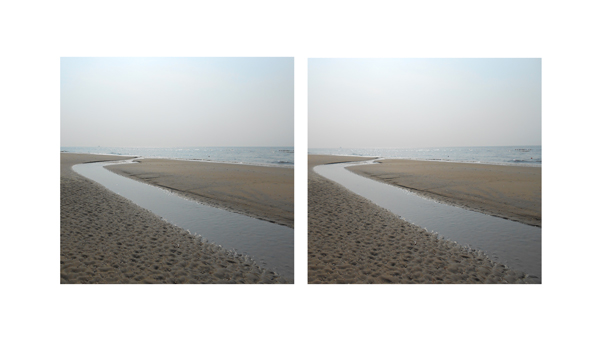
Expedition Eridanos - Bram Esser & Francois Lombarts (2014). Photo: Francois Lombarts.

September 2014 we start the new residency program called Badgast2.0 for artistic research on the Sand Engine where Satellietgroep and Nida Art Colony will collaborate on an exchange program with artist in residencies.
Before the Sand Engine dissolves, I propose as an artistic statement to enlist it as new and innovatory heritage for Unesco World Heritage. A new narrative of the relationship of man and nature, both cultural and natural, both tangible and intangible. Innovatory heritage, as it changes our perception of protective-exclusive heritage into dynamic-inclusive heritage: intended to change – even disappear - and to trigger changes and innovations.
In this process we need the conceptual freedom of artists collaborating with scientists and engineers to explore unexpected liminal imaging of nature.
“Techno Ecologies,” a term coined or resurrected by RIXC curators Rasa Šmite and Raitis Šmits who write, “The changing role of art in society is one where it does not just create a new aesthetics but gets involved in patterns of social, scientific, and technological transformations,” (2014).
I would prefer to call it transitions or even juxtapositions.
During the Inter-Format Symposium at Nida the project ‘The Liminal Dome’ has become a myth. I did not experience it myself, so for me it can remain a myth, enriched by the endeavours tales of the returning sunrise-sunset participants. Thanks to Anna Romanenko, Björn Kühn and Gabriel Hensche for sharing this project!
The rich variety of contributions during ‘On Flux of Sand and Acquatic Ecosystems’ reflects the multi layered issues at stake.
Thank you all, I look forward to continue on this journey!
Jacqueline Heerema
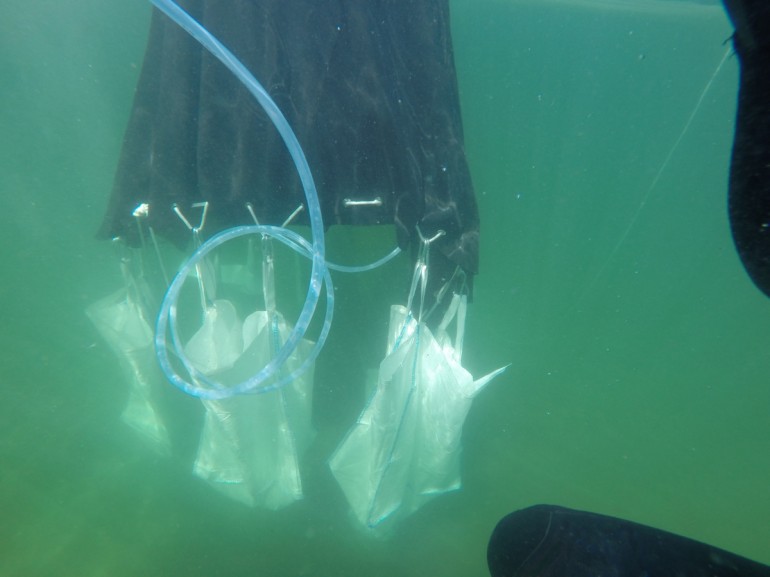
The Liminal Dome - Anna Romanenko, Björn Kühn & Gabriel Hensche - at Nida, May 2014. Photo: Natacha Paganelli / NAC
Tip: Flip through the online ‘Visboek’ by Adriaen Coenensz (NL, 1577)

Koninklijke Bibliotheek (Royal Library in The Hague)
http://kb.nl/bladerboeken/het-visboek-van-adriaen-coenen
Links:
Unesco Curonial Spit: http://whc.unesco.org/en/list/994
Unesco Wadden Sea: http://whc.unesco.org/en/list/1314
Sand Engine: http://www.dezandmotor.nl/en-GB/
New Wilderness Oostvaardersplassen: http://www.staatsbosbeheer.nl/english/oostvaardersplassen.aspx
The Liminal Dome: liminaldome.com
Satellietgroep participated in the curatorial board of the Inter-Format symposium 2014 at Nida Art Colony called 'On Flux of Sand and Aquatic Ecosystems' with curator Vytautas MichelkeviÄius (Nida Art Colony), Rasa and Raitis Smits (RIXC, LV), Andrew Gryf Paterson (Pixelache, SCO/FIN), Erich Berger (Finnish Society of Bioart, AT/FI).
Dutch participants of the Inter-Format symposium at Nida: Jan de Graaf (urbanist), artists Marinus van Dijke, Jeroen van Westen, Edwin Deen, Theun Karelse, philosopher Bram Esser, designer Francois Lombarts and the team of Satellietgroep with Ronald Boer (art and landscape), Eliane Bots (filmmaker) and Jacqueline Heerema.
OPEN CALL Nida Inter-Format Symposium May 2014
| 2013-12-20 10:15:54
ON FLUX OF SAND AND AQUATIC ECOSYSTEMS
Inter-format Symposium 2014 at Nida Art Colony Lithuania
May 22–25, 2014, Nida, Lithuania
Curatorial Board: Rasa and Raitis Smits (RIXC, LV), Andrew Gryf Paterson (Pixelache, SCO/FIN), Erich Berger (Finnish Society of Bioart, AT/FI), Jacqueline Heerema and Ronald Boer (Satellietgroep, NL). Curator: Vytautas MichelkeviÄius, Nida Art Colony.
http://nidacolony.lt
OPEN CALL FOR CONTRIBUTIONS TO INTER-FORMAT SYMPOSIUM 'ON FLUX OF SAND AND AQUATIC ECOSYSTEMS'
Please send your short text/audio/video/image proposal for the symposium with a short CV and portfolio (if applicable) by 15th February to: vytautas@nidacolony.lt
If you have questions please contact: satellietgroep@gmail.com
The Inter-format symposium is a main yearly Nida Art Colony event which is a merge between academic conference, art festival and cosy performative meeting of interdisciplinary professionals. This year it is a part of the techno-ecologies project in cooperation with RIXC (Latvia).
At Nida in 2014, the Flux of Ecosystems of Sand, Water and Man will be discussed in depth and performed from sunrise to moonset during lectures, performances, site-specific artworks, workshops and collective dinners. The participative nature of the symposium brings together 30-40 professionals for 3 days and nights to spend time in the intensive and productive sharing and working environment. Artists, curators, scientists, researchers and people from interdisciplinary background are welcome to apply. Selected participants are provided with travel grants (up to 350 EUR), accommodation and catering. However the capacity is limited and if you could also attend on your own expenses, please indicates in the proposal.
Format
You should mention the format of your contribution (performance, lecture, talk, discussion, performative talk or walk, site-specific intervention, conceptual breakfast/dinner, etc.) and the preferred length and settings (inside (auditorium, kitchen, etc.), outside (beach, dunes, forest, town, etc), if any specific equipment is required, etc). Please indicate in the subject line: "Proposal for Inter-format Symposium". To get an idea of the symposium’s nature and atmosphere please check it’s visual history and previous programmes: http://nidacolony.lt/en/projects/symposium
Preliminary topics, questions and keywords addressed:
The symposium is happening in the middle of Curonian Spit (included in the UNESCO World Heritage List) which is a 100km long geological formation (peninsula) of sand, dividing the Baltic Sea with it’s salty water ecosystem, and the Curonian Lagoon with fresh water ecosystem. Therefore the specific issues of the site are raised to discuss the globally relevant problems.
MAN AS ECOSYSTEM: Exploring liminal passages through interplay of man and nature.

BRACKISHNESS: Challenges found by probing (dis)balances caused by human impact on sweet and salt water conditions.
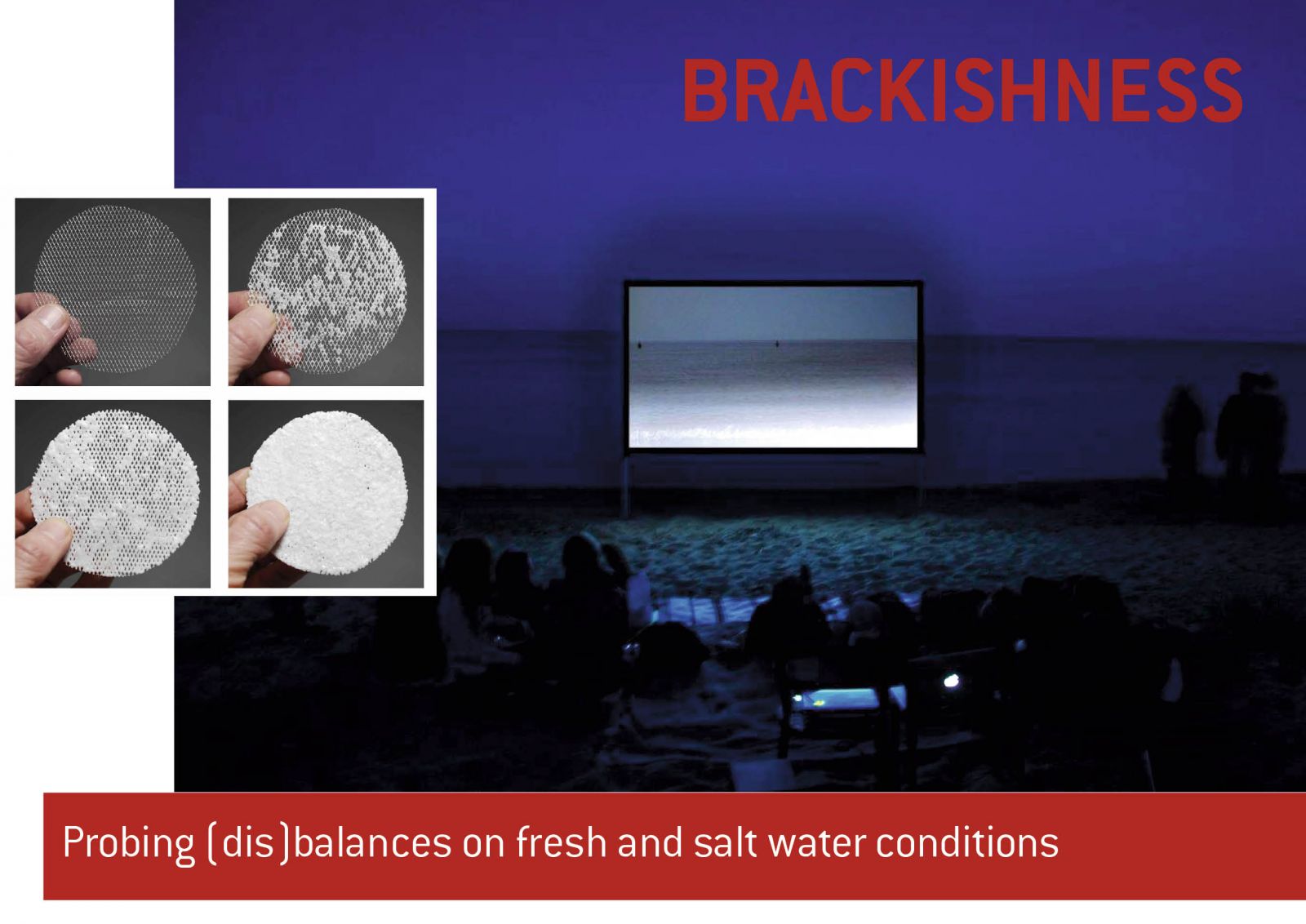
MOVING SANDS: Casestudies on local histories of Curonian Spit, from sand dessert, with XIX century dunes fixation and buried villages to forestation of dunes and green cube.

TECHNOLOGY-MADE NATURE: Predictions and scenarios of XXII century futurological forecasts with historical XIX century interventions in mind, nature as critical inspiration instead of romantic with questions of technological bridge and divide.

SEASONAL DRAMAS: coastal survival strategies with Nida as exemplary case to experience desert and frozen landscapes. Both as seasonal phenomena and by manmade interventions (like UNESCO programs).
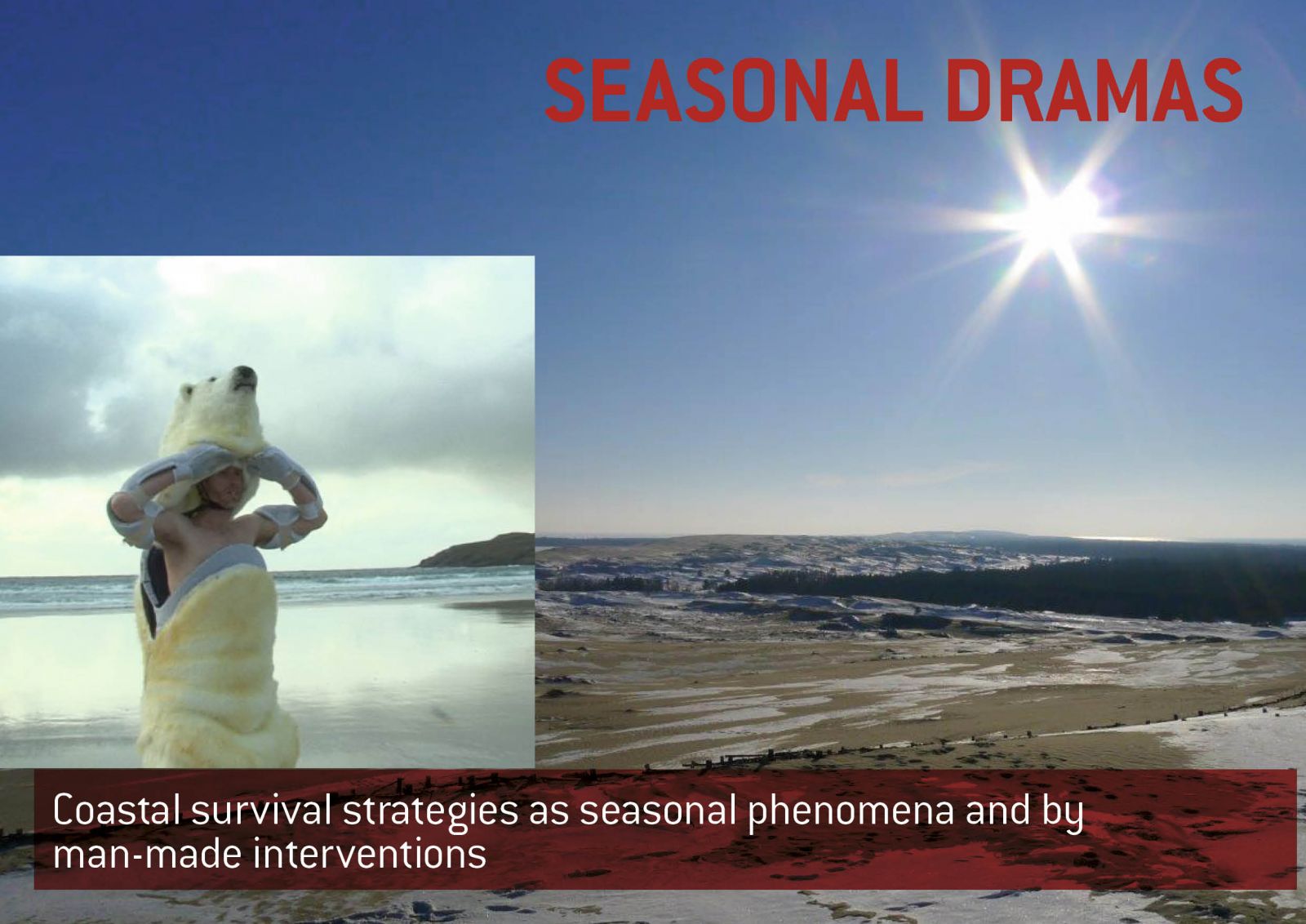
FROM COMMUNITY TO COMMUNE TO COLONY: Coping and coexisting with invasive exotic species, both human and natural, as settlers, artists and cormorants (birds), issues of isolation, living in (presumed) secluded communities.

Keywords:
Sea and Lagoon Ecosystems: changing sea levels, algae, pollution, brackishness, borders, marine debris / treasures
Man and Sand-Made Landscape: national park as green cube, moving / dead dunes, migration of birds and tourists, artificial/constructed nature, moose, deer, boar and cormorants
Food, Energy and Sustainability: fishing, foraging, sustainable transport, small-scale farming eg. hydroponics, energy production, supermarket dominance
Under the umbrella of Techno-Ecologies the symposium aims to re-approach cultural, social and ecological sustainability through artistic explorations and cultural innovation. The necessity to focus on the relationship between man and ecosystems builds mainly on the concerns uttered by Felix Guattari in his book Three Ecologies. According to Guattari we should take three crucially important 'ecological registers' into account -the environment, social relations, and human subjectivity. Beyond questions of finite resources and obvious forms of pollution the symposium about ‘techno-ecologies’ attempts to develop sustainable relationships with technology and our living environment.
An informed ethical and philosophical perspective is indispensable if we hope to find less hazardous routes into the future.
The Techno-ecologies project is designed and implemented by cultural organizations: RIXC (Latvia), Baltan Laboratories (The Netherlands), Napon (Serbia), Ars Longa (France) and Finnish BioArt Society (Finland) together with institutional partners: Finnish Academy of Fine Arts (Finland), Nida Art Colony of Vilnius Arts Academy (Lithuania), MPLab (Art Research Lab) of Liepaja University (Latvia), and in collaboration with their associated partners: Van Abbemuseum (The Netherlands), Museum of Contemporary Art Vojvodina in Novi Sad (Serbia), Pixelache / Pixelversity (Finland), Serde (Latvia) and Chant des Possibles (France).
Field trip to Nida Art Colony (LT)
| 2014-01-27 16:46:48
PREPARING 'ON FLUX OF SAND AND AQUATIC ECOSYSTEMS'
Satellietgroep - Ronald Boer, Jacqueline Heerema and philosopher Bram Esser - visited Nida for research in January and curator Vytautas MichelkeviÄius will visit The Hague as resident at DCR Gueststudio in Februari.
Satellietgroep is part of the curatorial board and in collaboration with Nida Art Colony is currently developing the Inter-format Symposium at Nida in Lithuania called 'On Flux of Sand and Aquatic Ecosystems' in May. Both Satellietgroep and Nida Art Colony are located in coastal transition areas, in which on local scale man-made ecosystems are enormously affected by worldwide prospects of climate change, shifting economics, politics and tourism.
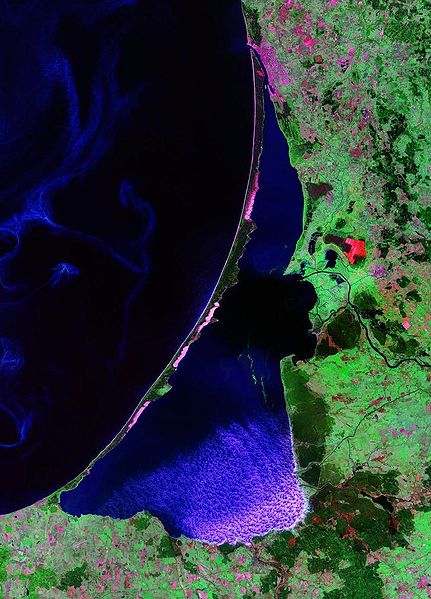
Nida Art Colony is based in the middle of the Curonian Spit between Baltic Sea and Lagoon in Lithuania. Photo credits: Satellite photo by Landsat (NASA) 2000.
Nida Art Colony is located in the middle of Curonian Spit (included in the UNESCO World Heritage List) which is a 100km long geological formation (peninsula) of sand, dividing the Baltic Sea with it’s salty water ecosystem, and the Curonian Lagoon with fresh water ecosystem. Therefore the specific issues of the site are raised to discuss the globally relevant problems. http://en.wikipedia.org/wiki/Curonian_Spit
http://whc.unesco.org/en/list/994
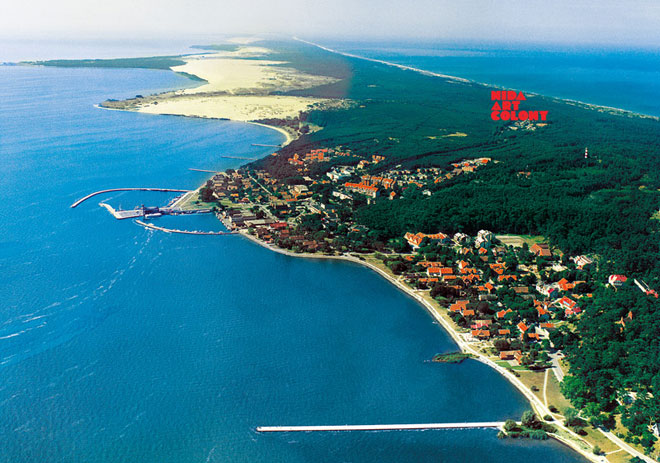
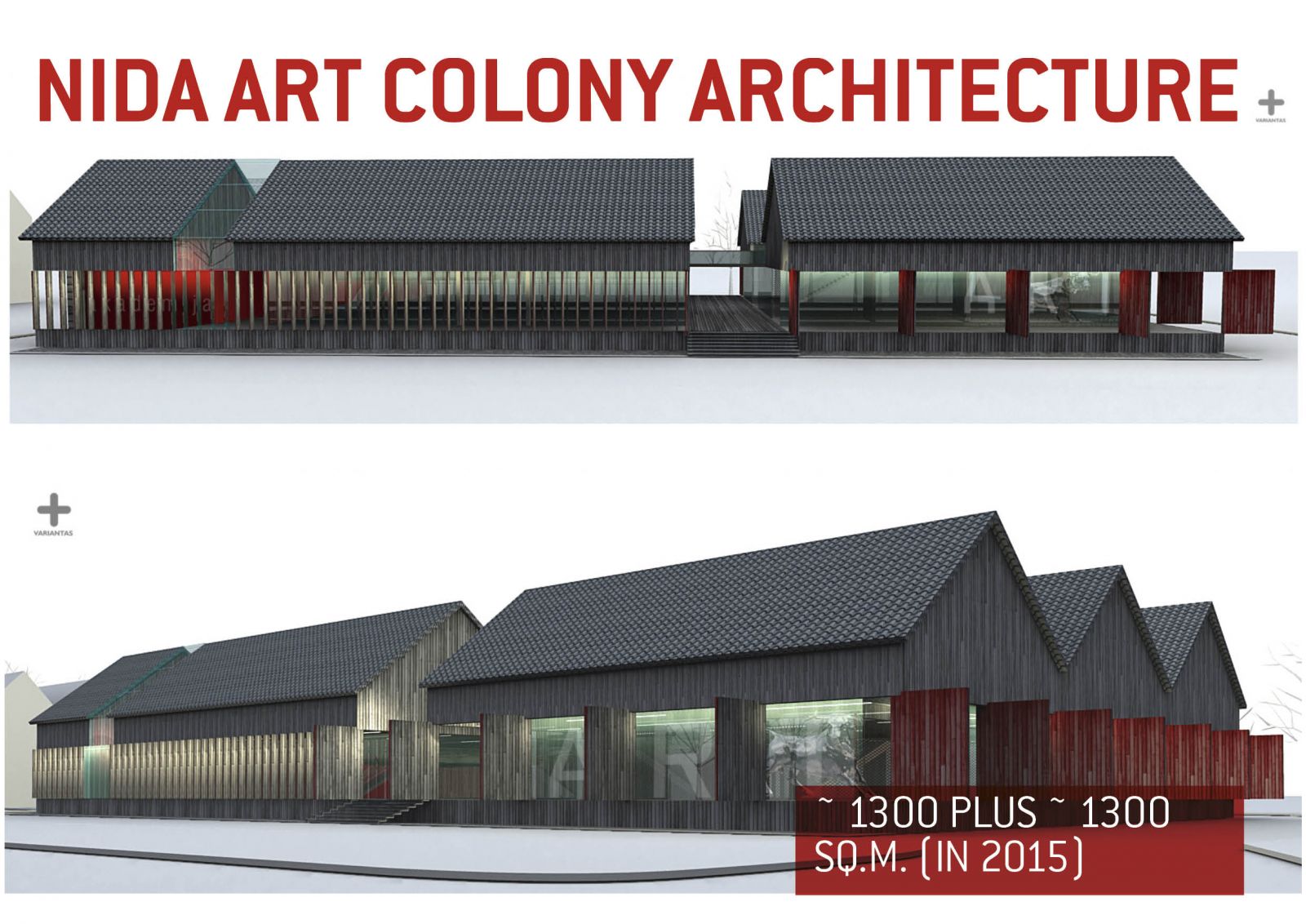
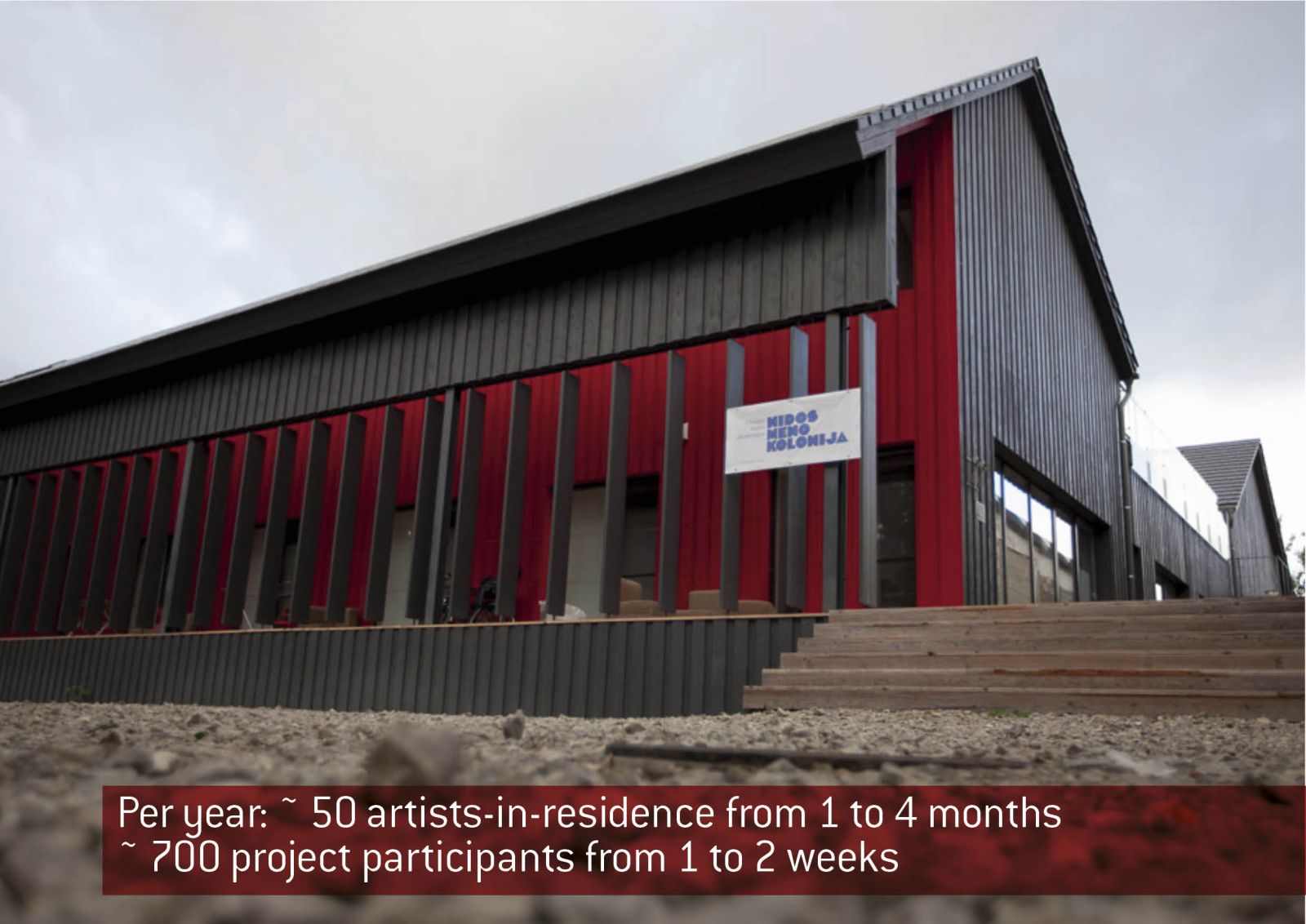
Baltic Sea at NIda, January 2014 (LT)
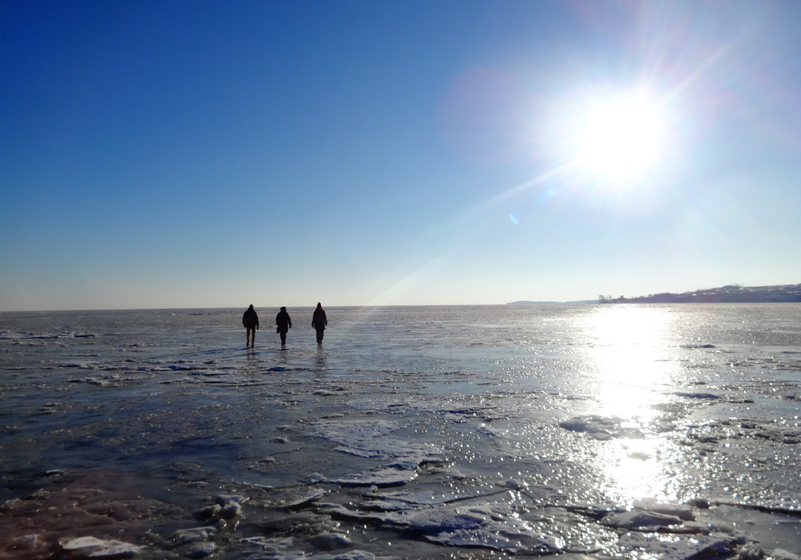
Frozen lagoon at Nida, January 2014 (LT)
